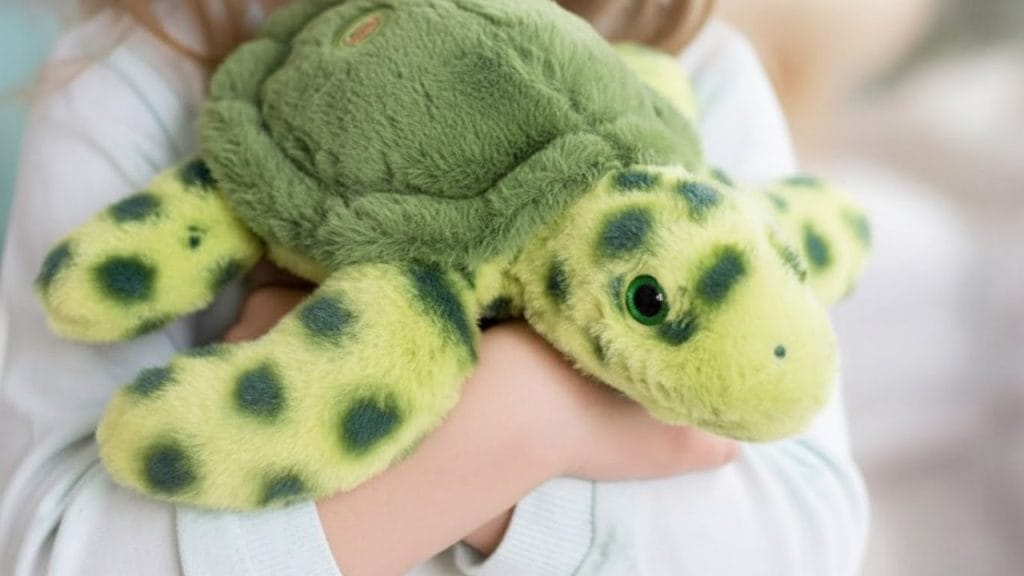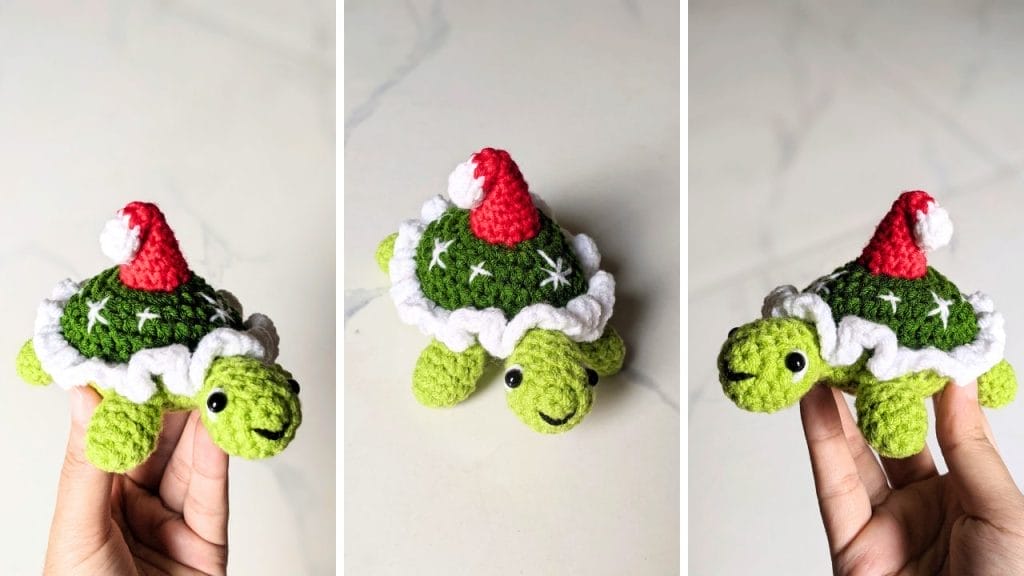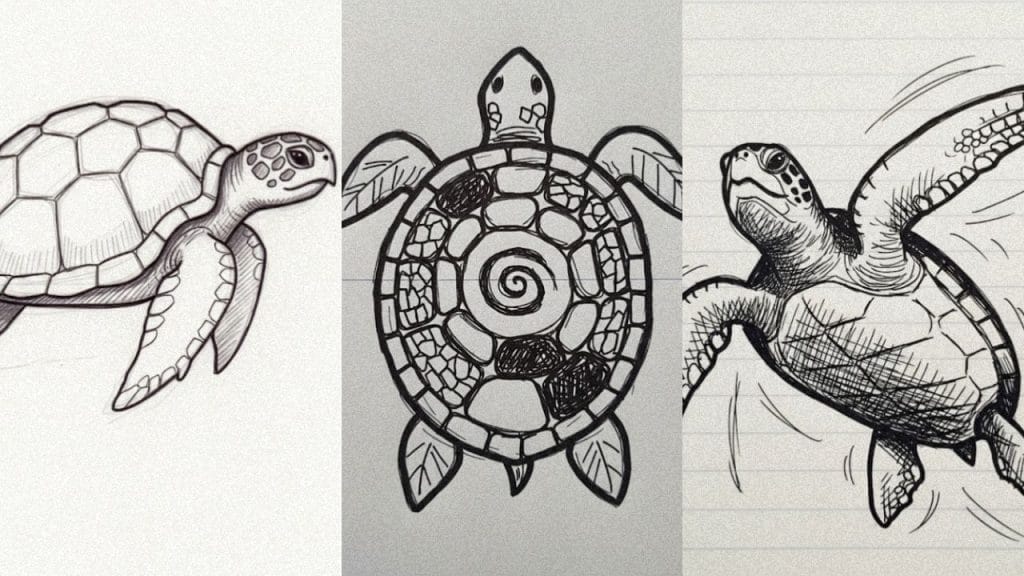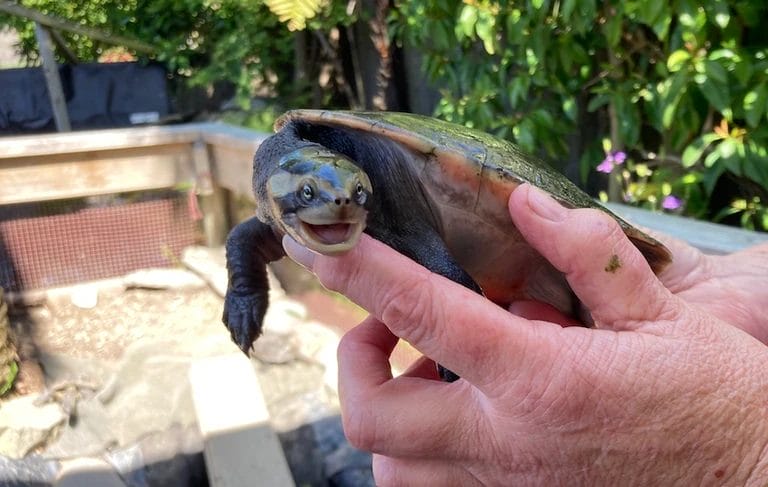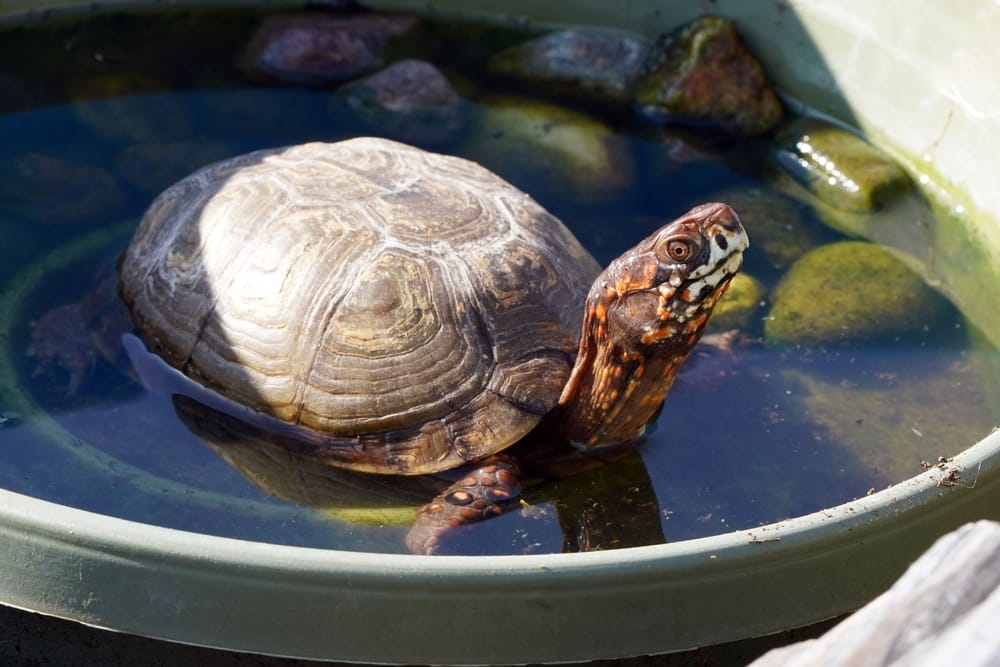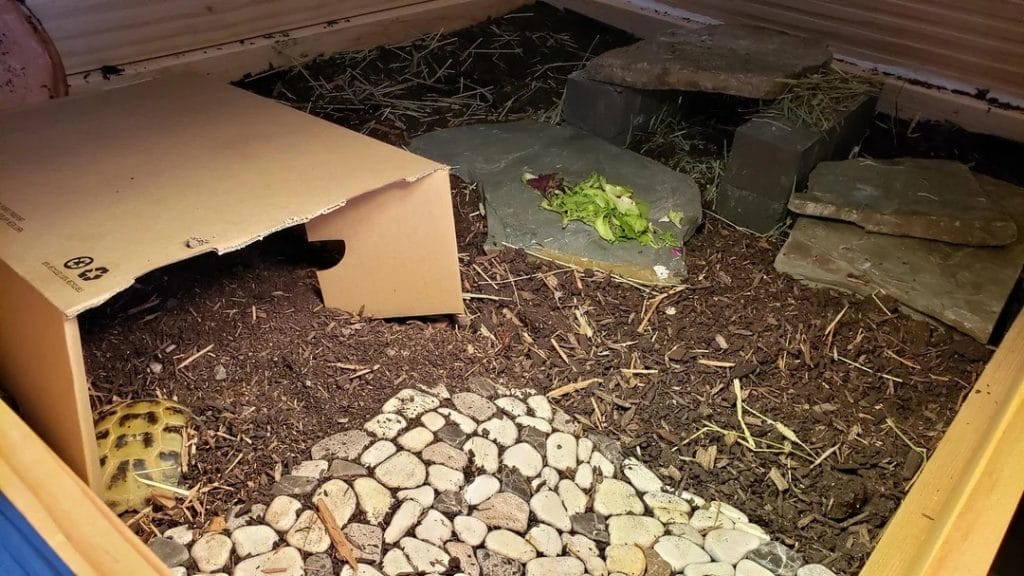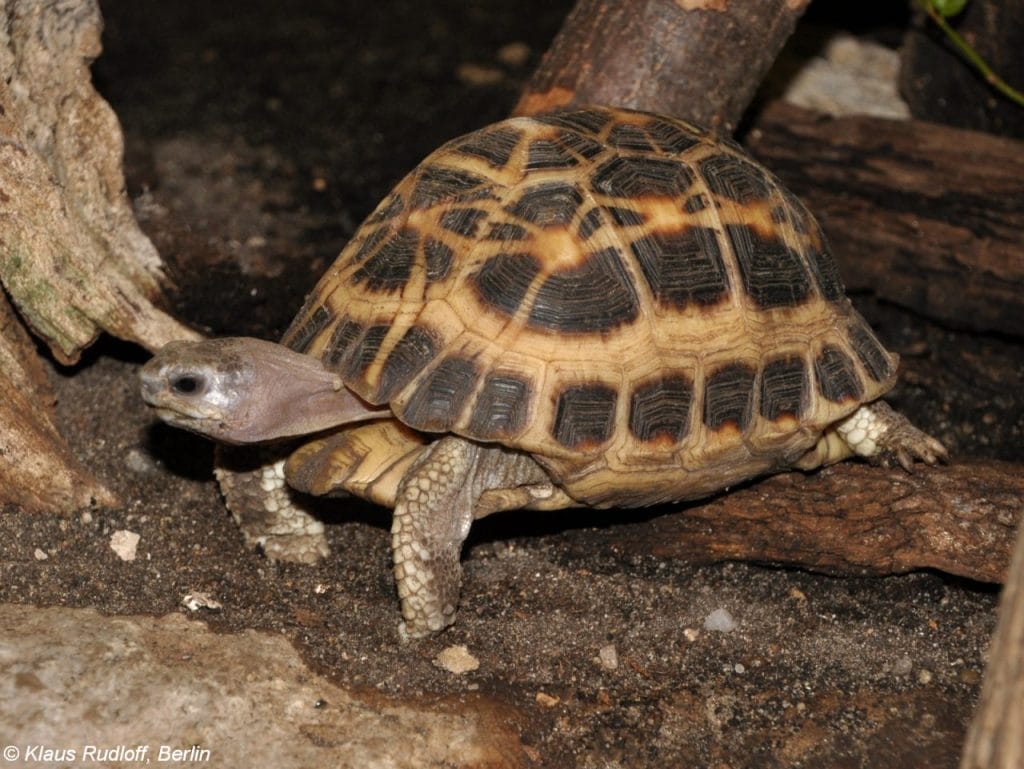Blanding’s Turtle Care Guide [Creating Perfect Setup]

This post was created with help from AI tools and carefully reviewed by a human (Muntaseer Rahman). For more on how we use AI on this site, check out our Editorial Policy.
Look, I’m not going to sugarcoat this: Blanding’s turtles are the weirdos of the turtle world, and I mean that in the best way possible.
These guys look like they’re permanently smiling with their bright yellow throats, and they act like tiny armored explorers who refuse to stay put.
If you’re thinking about keeping one, you better be ready for a turtle that’ll make you rethink everything you thought you knew about aquatic pets.
What Makes Blanding’s Turtles So Different?
First off, let’s talk about that face.
The bright yellow chin and throat make them look like they just heard the world’s best joke. Their shell is domed like an old military helmet – not flat like most turtles – and it’s covered in these cool yellow speckles on a dark background.
Adults hit about 5-8 inches long, though some overachievers reach 10-11 inches. They weigh in around a pound or so when fully grown.
But here’s the kicker: these turtles can live 75-80 years. You’re not getting a pet; you’re getting a lifelong commitment that might outlive your mortgage.
They don’t even start having babies until they’re in their late teens or twenties. That’s right – these turtles go through puberty later than most humans.
Females lay 6-15 eggs per clutch in late spring/early summer, traveling up to a mile from water to find the perfect nesting spot. The eggs take 65-90 days to hatch, and nest predation is brutal – most eggs never make it.

The Reality Check You Need
Before you get starry-eyed about that yellow smile, let me hit you with some truth bombs.
Blanding’s turtles are threatened or endangered across most of their range. We’re talking serious conservation concerns here.
Some states allow keeping captive-bred ones with permits, but you absolutely cannot just yank one out of the wild. That’s illegal pretty much everywhere and also makes you a terrible person.
Road mortality is killing these guys left and right because they’re nomadic and cross roads between wetlands. In Ottawa, one population is literally on the verge of extinction because of urban development.
If you do find captive-bred babies for sale, expect to pay $200-400+. They’re not cheap, and they shouldn’t be.
This Hilarious Turtle Book Might Know Your Pet Better Than You Do
Let’s be real—most turtle care guides feel like reading a textbook written by a sleep-deprived zookeeper.
This one’s not that.
Told from the snarky point of view of a grumpy, judgmental turtle, 21 Turtle Truths You’ll Never Read in a Care Guide is packed with sarcasm, sass, and surprisingly useful insights.
And hey—you don’t have to commit to the whole thing just yet.
Grab 2 free truths from the ebook and get a taste of what your turtle really thinks about your setup, your food choices, and that weird plastic palm tree.
It’s funny, it’s honest, and if you’ve ever owned a turtle who glares at you like you’re the problem—you’ll feel seen.
Tank Size: Bigger Than You Think
Here’s where most people mess up.
Hatchlings can start in a 20-gallon long tank with only 4-5 inches of water. But that’s just the beginning.
As they grow, you’re looking at 200 gallons minimum for an adult. That’s not a typo. These turtles need serious space.
The general rule: 10 gallons per inch of shell length. A 7-inch turtle needs 70 gallons at bare minimum.
But honestly? Go bigger. These turtles are wanderers who travel over a mile in the wild searching for new wetlands.
Water depth should be 6-12 inches – enough to swim but not so deep they can’t reach the surface easily. They’re good swimmers but not marathon athletes.
The Land Area Nobody Talks About
Here’s the truth: Blanding’s turtles are highly aquatic despite their wandering reputation in the wild.
They need a sturdy basking dock and a small land area – not massive terrestrial space like box turtles. Most of your tank should be water.
Build a solid basking platform with a ramp they can easily climb. Stack smooth rocks, use thick substrate for a small land section, or get a commercial turtle dock.
They can’t jump, so that ramp is non-negotiable. But don’t sacrifice swimming space for land they won’t use much.

Water Temperature: Cooler Than Most Turtles
Here’s where Blanding’s turtles are different from tropical species.
These are cold-tolerant northern turtles that don’t need heated water like red-eared sliders. They come from climates where water naturally cools down.
Ideal water temperature: 70-75°F (21-24°C). This is cooler than most aquatic turtles but not frigid.
You probably won’t need an aquarium heater unless your home drops below 60°F regularly. Room temperature water is usually perfect.
At night or in winter (if kept indoors), temps can naturally dip into the high 50s or low 60s with no issues. They actually handle brief cold exposure better than sustained tropical heat.
The real danger is heat. Prolonged temperatures above 80°F stress them out. If you live in a hot climate without AC, you might need to actively cool the tank or choose a different species.
Basking Setup: Low and Slow
Basking temperature should be around 80-90°F (27-32°C) – much lower than typical turtle basking spots.
Use a 60-100 watt incandescent bulb positioned to create a warm spot. Mercury vapor bulbs work great because they provide both heat and UVB.
The basking area itself can be driftwood, cork bark, or stacked rocks. Just make sure it’s completely dry and stable.
UVB Lighting: The Non-Negotiable
Without proper UVB, your turtle will develop metabolic bone disease and die slowly and painfully.
Use a Reptisun 10.0 or similar UVB tube light that covers 50-75% of the tank length. Not the little coil bulbs – get the tube.
Mount it 10-12 inches above the basking spot for proper UVB exposure. Don’t put it behind glass or screen because that filters out the rays.
Replace UVB bulbs every 6 months even if they still look bright. The UVB output dies long before the visible light does.
Run lights for 12-14 hours per day, then turn them completely off at night. Turtles need a proper day-night cycle.
No colored night lights. No heat lamps at night. Just darkness.
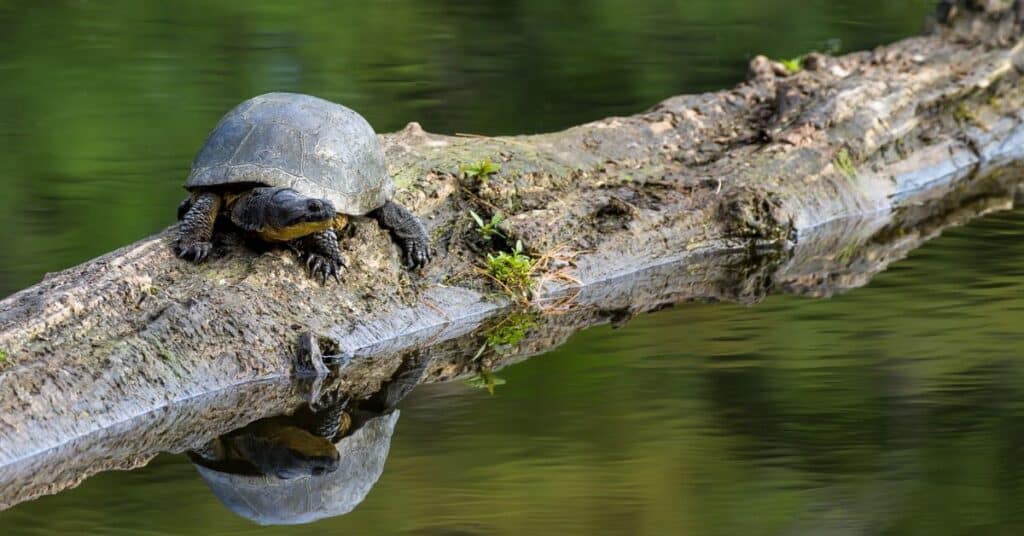
Filtration: Industrial Strength Required
Turtles are messy. Blanding’s turtles are REALLY messy.
Your filter needs to process the tank’s water at least 4 times per hour. For a 100-gallon tank, that’s a filter rated for 400 GPH minimum.
Canister filters are your best bet. They provide mechanical, biological, and chemical filtration without taking up precious swimming space.
Even with a great filter, do 25% water changes weekly or 50% every two weeks. Remove uneaten food daily.
When you do full water changes monthly, scrub everything down with diluted bleach, rinse thoroughly, and let it dry before refilling.
Plants: The Secret Weapon
Blanding’s turtles LOVE vegetation.
In the wild, they cluster around shallow ponds loaded with aquatic plants. In captivity, give them the same.
Good choices include:
- Water hyacinth (they’ll use it as a basking platform)
- Water lettuce
- Watercress
- Duckweed and Salvinia (floating cover that makes them feel secure)
- Water lilies
Plants serve triple duty: hiding spots, basking platforms, and occasional snacks.
Diet: The Carnivore Reality
Blanding’s turtles are serious meat eaters, especially when young.
Hatchlings and juveniles are extremely carnivorous – eating 75-80% protein. They need that fuel for rapid growth.
Adults shift toward more plant matter – around 50-60% meat, 40-50% vegetation. They’re still carnivores at heart but balance it out more.

Primary Foods:
For Hatchlings (Daily Feeding):
- High-protein commercial turtle pellets
- Earthworms and nightcrawlers (cut into small pieces)
- Small crickets
- Tiny fish pieces
For Juveniles and Adults (Every 2-3 Days):
- Commercial turtle pellets (Zoo Med, ReptoMin)
- Earthworms and superworms
- Fish pieces (tilapia, smelt, silversides)
- Crayfish
- Feeder frogs and tadpoles (occasionally)
Protein Treats (1-2 Times Weekly):
- Lean beef or beef heart
- Chicken hearts, gizzards, liver
- Pinky mice (very occasionally for adults)
Plant Matter (More Important for Adults):
- Dark leafy greens (romaine, dandelion greens, mustard greens)
- Aquatic plants (they’ll nibble on tank plants like duckweed)
- Water lettuce and water hyacinth
Warning: These turtles are food-aggressive. They’ll follow you around begging, and they will eat until they literally puke if you let them.
Don’t overfeed. Stick to the head method (food amount equal to their head size) or the 15-minute rule (whatever they eat in 15 minutes).
Dust food with calcium powder 2-3 times weekly, especially for growing juveniles.
Substrate: Optional But Nice
You don’t technically need substrate – bare bottom tanks are easier to clean.
But if you want a natural look and plan to keep live plants, use:
- Medium-sized river rocks (too big to swallow)
- Sphagnum moss mixed with topsoil for land areas
- Sand in shallow areas (only if you’re confident they won’t eat it)
Never use small gravel. Turtles eat it and die. Just don’t.

Outdoor Setup: The Dream Scenario
Once your turtle hits 4 inches or so, outdoor living becomes the gold standard.
You’ll need:
- An in-ground pond (kiddie pool works) with at least 15×15 feet of water
- 30×30 feet total pen space with secure walls
- Walls 18 inches high, buried 6 inches deep
- Both swimming AND walking areas
- Natural vegetation
- Multiple hiding spots
Blanding’s turtles wander extensively and need room to explore. An outdoor setup mimics their natural behavior way better than any indoor tank.
Just make sure your climate works. These are northern turtles that brumate in winter.
Winter Care: Brumation or Not?
In the wild, Blanding’s turtles brumate (hibernate) from October/November through March/April in muddy pond bottoms.
In captivity, you can either:
Option 1: Let them brumate
- Move to a cool garage or basement in a Rubbermaid container
- Fill with damp leaves or shredded paper
- Keep temps 35-50°F
- No food, minimal water
- Check occasionally for health
Option 2: Keep them active
- Maintain normal temps year-round
- Continue regular feeding and care
- Provide “endless summer”
Both work fine. Just be consistent.
Common Mistakes That Kill Turtles
Let’s get real about what NOT to do:
- Using water heaters – These turtles need cooler water. Heat kills them.
- Skipping UVB – Metabolic bone disease is a slow, horrible death. Get the damn light.
- Tiny tanks – A 40-gallon tank is NOT adequate for an adult. Go bigger.
- All pellets, no variety – Feed diverse protein sources and some veggies.
- Forgetting the land area – These turtles need substantial land space to thrive.
- Not changing water enough – Dirty water causes shell rot, respiratory infections, and death.
- Keeping with other turtles – They’re best kept alone. Tank mates mean competition and stress.

Health Red Flags to Watch For
Get to a reptile vet immediately if you see:
- White, fuzzy spots on skin or shell (fungus – increasingly common)
- Soft, spongy shell areas or foul-smelling discharge (shell rot)
- Constantly swimming at the surface gasping (respiratory infection)
- Swollen, closed eyes
- Refusal to eat for more than a week
- Lethargy and spending all time underwater or unable to dive
Ranavirus is a growing threat in wild populations and can spread in captivity. Symptoms include lethargy, swollen eyes, skin lesions, and sudden death. Quarantine new turtles for at least 6 weeks before introducing them to others.
Shell fungus appears as white or gray patches. It’s preventable with clean water and proper basking time to dry out completely.
Adding 1/4 cup of aquarium salt per 5 gallons of water helps prevent fungus, but don’t skip vet care for serious issues.
Behavior: What to Expect
Blanding’s turtles have personalities.
- They’re alert, intelligent, and food-motivated. They’ll recognize you as the food bringer and actively swim toward you.
- They’re curious explorers who will investigate every inch of their space.
- They’re shy when startled and will dive underwater and stay there for hours if spooked.
- They’re surprisingly agile on land for an aquatic turtle, climbing out to forage and explore.
- They’re long-lived and slow-growing, so patience is key.
The Bottom Line
Blanding’s turtle care isn’t for beginners.
These turtles need cooler water, bigger tanks, tons of space, perfect filtration, UVB lighting, varied diet, and decades of commitment.
But if you can provide all that? You get a smiling, personable, fascinating turtle that’ll be with you for most of your adult life.
Just remember: every captive-bred Blanding’s turtle represents hope for a species struggling to survive in the wild. Take the responsibility seriously.
Give them the setup they deserve, not the bare minimum they can survive in.
That bright yellow smile is counting on you.

About Author
Muntaseer Rahman started keeping pet turtles back in 2013. He also owns the largest Turtle & Tortoise Facebook community in Bangladesh. These days he is mostly active on Facebook.


